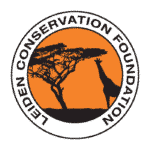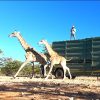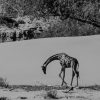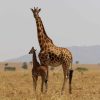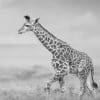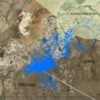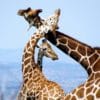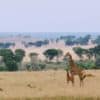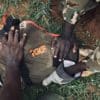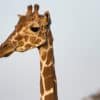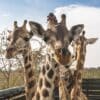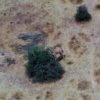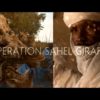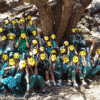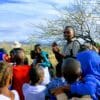While giraffe can ultimately only be saved in the wild in Africa, it is vital to apply a science-based strategy approach to their conservation.
National Giraffe Conservation Strategies and Action Plans
GCF works closely with governments, NGOs and academic partners throughout Africa to secure a sustainable future for all giraffe populations in the wild. Giraffe currently range across 21 countries and isolated ranges in West, Central, Eastern and Southern Africa. Giraffe face different threats throughout their range and conservation approaches need to be tailored to local needs and requirements. GCF continues to support African giraffe range states in the development of National Giraffe Conservation Strategies and Action Plans.
Strategy development starts with collaborative discussions that lead to a targeted workshop involving all national and international stakeholders. In these workshops the participants collate all available information on giraffe in the country or region, also in consideration of the continent-wide context, as well as identify knowledge gaps and threats to giraffe. With the help of an experienced facilitator, priorities for giraffe conservation and associated actions are identified and compiled in a document. While these meetings are hosted by the range state government, GCF plays a valuable role by providing technical and financial support. GCF has and continues to work with several African governments on the development of such National and Regional Giraffe Conservation Strategies and Action Plans. All endorsed plans are available on our website after their official launch.
Africa-wide Giraffe Conservation Strategic Framework: Road Map
In 2016, GCF developed a Strategic Framework as a Road Map to guide giraffe conservation activities throughout Africa and, where appropriate, to inform future country, regional and species plans, and/or an Africa-wide Giraffe Conservation Strategy.
This Strategic Framework summarises shared experiences and collective thoughts, perceived gaps in current giraffe conservation and management (both geographically and in terms of current knowledge in giraffe status), distribution, taxonomy, ecology and other aspects of giraffe science and management. Lastly, this Strategic Framework outlines conservation priority areas and suggested activities to address these. These suggested activities could be used as a guiding Road Map for giraffe conservation by the IUCN SSC Giraffe & Okapi Specialist Group (GOSG), GCF, conservation partners, the zoo community, private sector and most importantly, the governments and people of Africa, who live with and collectively manage giraffe in the wild.
The first three conferences dedicated to the ‘wild’ giraffe, Giraffe Indaba I, II and III, were coordinated by GCF and co-hosted with the IUCN SSC GOSG in Namibia (2011), Kenya (2013), and South Africa (2015), respectively. The concept of developing an Africa-wide Giraffe Conservation Strategic Framework evolved out of GCF discussions at Giraffe Indaba I, and subsequent discussions with giraffe conservation partners across the globe.
Giraffe Conservation Science Symposium
In May 2018, 35 experts working directly on giraffe or in thematic areas relevant to conservation-based decision-making from NGOs, academia, and African governments came together to develop a unifying Africa-wide Giraffe Conservation Science Management Framework. During this first-ever Giraffe Conservation Science Symposium, the group identified key gaps for further assessment as well as opportunities for developing partnerships and working collaboratively across Africa to help save giraffe before it is too late. In May 2019, several of these experts came together again to review the activities so far and make further plans for the future.
Four key thematic areas were identified to cover the most burning questions that must be better understood to secure a future for all giraffe populations in Africa:
- Taxonomy. Main questions: How many different giraffe are there? What genetic tools can we use to better understand giraffe? What other tools exist to understand why they do not interbreed
- Ecology. Main questions: How many giraffe are there really in Africa and where do they live? How do they use their habitat? What key habitats and forage is needed to conserve them?
- Health. Main questions: What is causing the emerging skin disease, and what impact does disease have on their survival? What can we learn in the wild to better look after captive giraffe and vice versa? What other key giraffe medicine questions do we need to understand?
- Human dimensions. Main questions: How are giraffe perceived in Africa by Africans? Is giraffe trade a threat to giraffe?
In the spirit of collaboration, the Symposium was hosted jointly by GCF, San Diego Zoo Global, Senckenberg Biodiversity and Climate Research Centre (Bik-F), and the Smithsonian Conservation Biology Institute (SCBI) at the SCBI campus in Front Royal, Virginia, USA. This initiative is a work-in-progress, and we hope that more experts, organisations, governments, and institutions will join us to find sustainable solutions for giraffe conservation in Africa. All participating organisations gave GCF the mandate to take the lead on taking this initiative further. Several collaborative projects and programmes have evolved out of this collaborative approach and the consortium of organisations as pledged their commitment to giraffe conservation.



